Introduction to Changdeokgung Palace I
배준민 /
2023-09-06
HERITAGE
조회수 189
-
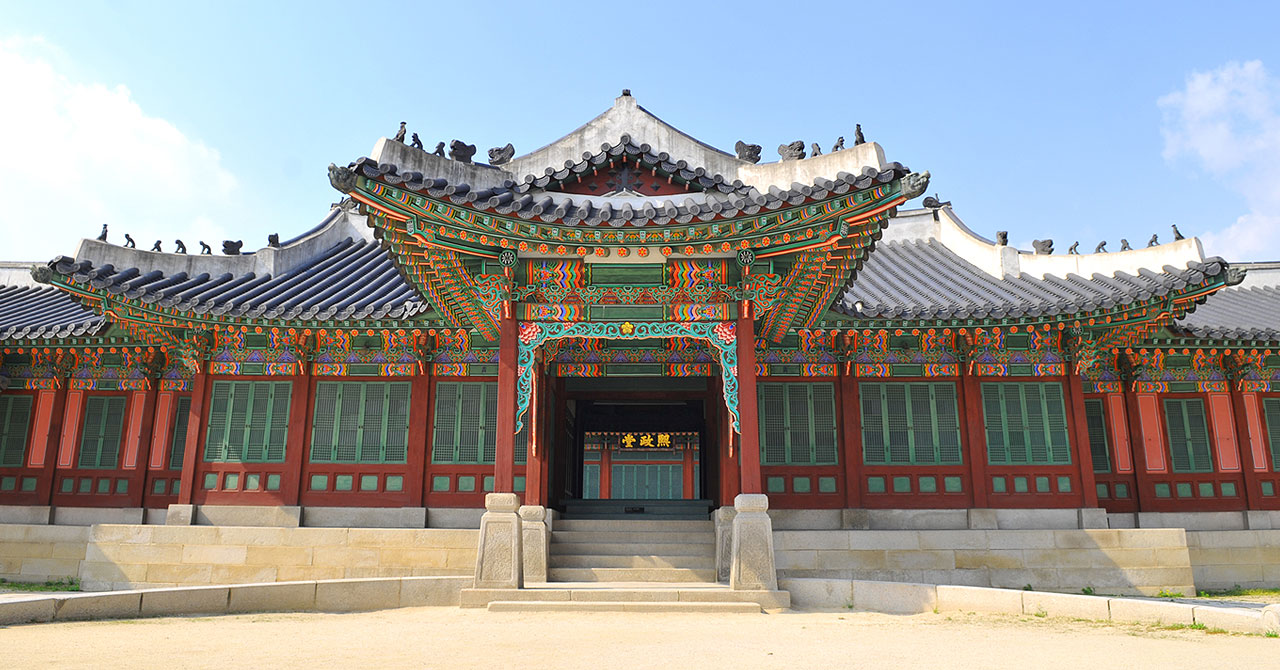
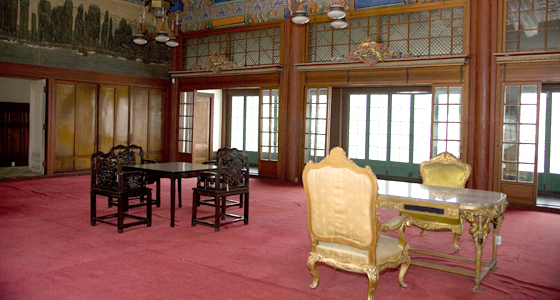
-
This is Huijeongdang, the king's office where he spent most of his time. The king met government officials and discussed academic and practical matters here. Huijeongdang was destroyed by fire four times. The current building was rebuilt in 1920, during the Korean Empire period. This is why you can see plum flower decorations, a symbol of the Korean Empire, throughout the hall. According to an old map, there was a pond called Hawolji in front of Huijeongdang long ago, and Jejeonggak was built to the south of it to observe the celestial bodies. Placing an astronomical observation instrument right in front of the king's office was an expression of his will to do right politics by imitating the ways of God. Injo and Sukjong welcomed envoys visiting from the Qing Dynasty at Huijeongdang, and King Jeongjo held a banquet for those who passed the Sungkyunkwan exam here. 이곳은 임금의 집무 공간이자, 임금이 하루 중 가장 많은 시간을 보냈던 희정당입니다. 임금은 이곳에서 자유롭게 신하를 접견하고 학문을 논했습니다. 희정당은 화재로 네 번이나 소실되었습니다. 현재의 건물은 1920년에 다시 지어진 것으로 전각 곳곳에서 대한제국 황실의 상징인 오얏꽃 장식을 볼 수 있습니다. 동궐도에 따르면 오래 전 희정당 마당에는 하월지라는 연못이 있었고 그 남쪽에 제정각을 세워 천체를 관측할 수 있는 선기옥형을 두었습니다. 임금의 집무실 바로 앞에 천체 관측 기구를 두었다는 것은 하늘의 도를 본받아 바른 정치를 하겠다는 의지의 표현이지요. 인조와 숙종은 희정당에서 청나라 사신을 맞이하였고 정조는 여기서 성균관 시험 합격자들을 위한 연회를 베풀기도 했습니다. http://www.heritage.go.kr/heritage/heritage_pop/detailImgPop.jsp?gung_number=2&file_name=img_changdeok_story_bg_09_00.jpg# http://www.heritage.go.kr/heri/gungDetail/imgDetail.do?detail_code=9&gung_number=2&img_serial_number=67&imgGubun=1&language=#
-
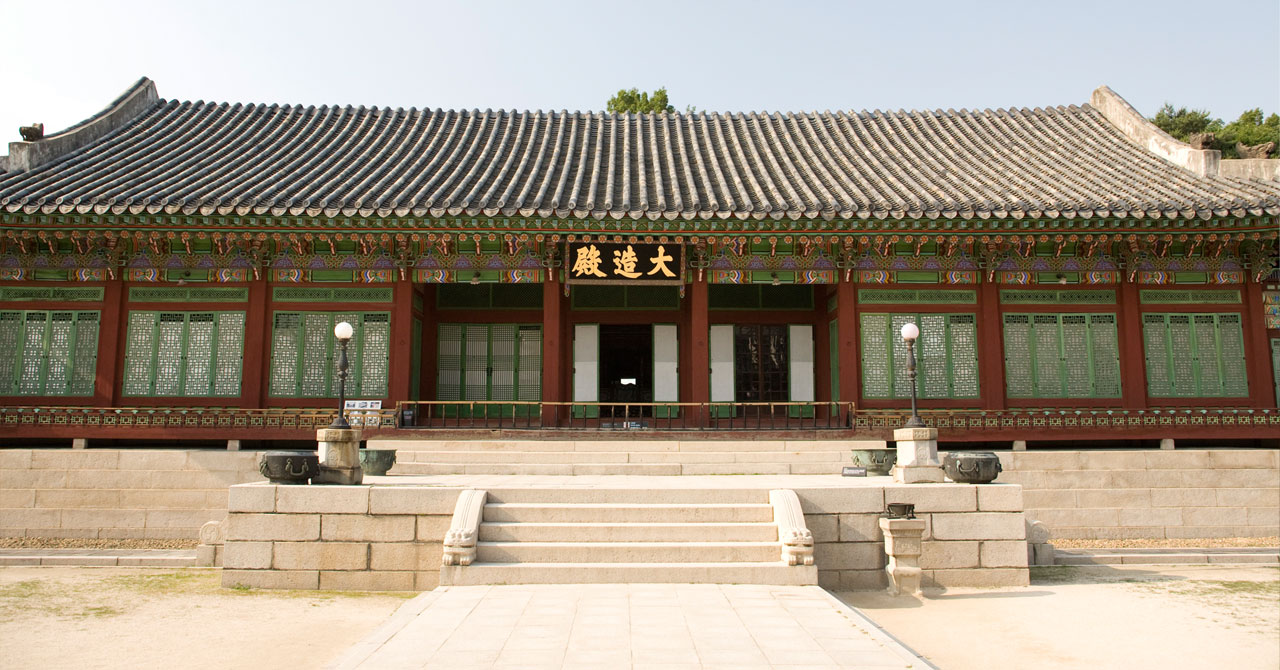
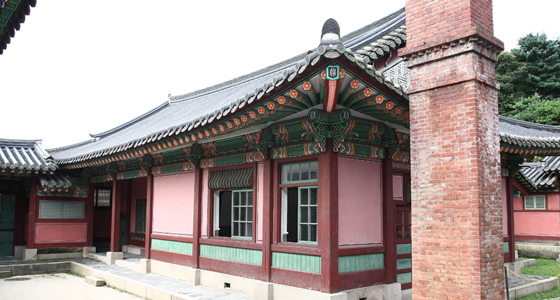
-
This is Daejojeon, located behind Huijeongdang, the king's residence. Daejojeon is the living quarters of the king and queen. Daejo means achieving great achievements and which translates into meaning hopes for a wise prince. Shall we look up at the roof? The roof of Daejojeon has no ridge. Since the king is symbolized by a dragon, it was thought that it was not good for another dragon, or ridge, to press down on the bed where the king was sleeping. If you look at the front yard of Daejojeon, you will see a series of pavilions with large and small rooms surrounding Daejojeon. It is said that court ladies who served the king and queen lived here. The veranda is placed to make it easy to move. Demeu is also located above the Woldae of Daejojeon Hall, right? But strangely, there is a lamp standing next to it that lights up with electricity. Daejojeon has not only electric lights, but also glass doors and parquet flooring instead of ondol. This is because the Japanese rebuilt it in a Western style after it burned down during the Japanese colonial period in 1917. It is unfortunate that much of Daejojeon's old appearance has disappeared. 이곳은 임금의 처소인 희정당 뒤편에 자리 잡은 대조전입니다. 대조전은 임금과 왕비의 침전입니다. 대조란 큰 공을 이룬다는 뜻으로 현명한 왕자의 생산을 의미하지요. 지붕을 한번 올려다볼까요? 대조전 지붕에는 용마루가 없습니다. 임금은 용으로 상징되므로 또 다른 용, 즉 용마루가 임금이 자고 있는 침전을 누르고 있는 것은 좋지 못하다고 생각했기 때문입니다. 대조전 앞마당을 보시면 대조전을 빙 둘러 크고 작은 방들이 있는 행각들이 연결되어 있지요. 이곳에서 임금과 왕비를 모시는 많은 상궁이나 궁녀들이 생활했다고 합니다. 툇마루를 놓아 이동하기 쉽게 되어 있습니다. 대조전 월대 위엔 역시 드므가 자리 잡고 있지요? 그런데 특이하게도 전기로 불을 밝히는 전등이 옆에 서 있습니다. 대조전에는 전등뿐만 아니라 유리문, 온돌대신 쪽마루가 깔려 있지요. 이는 1917년 일제 강점기시절, 화재로 이곳이 모두 불타버린 후 일본인들이 서양식으로 다시 지었기 때문인데, 대조전의 옛모습이 많이 사라져 아쉽습니다. http://www.heritage.go.kr/heritage/heritage_pop/detailImgPop.jsp?gung_number=2&file_name=img_changdeok_story_bg_10_00.jpg http://www.heritage.go.kr/heri/gungDetail/imgDetail.do?detail_code=10&gung_number=2&img_serial_number=397&imgGubun=1&language=#
-

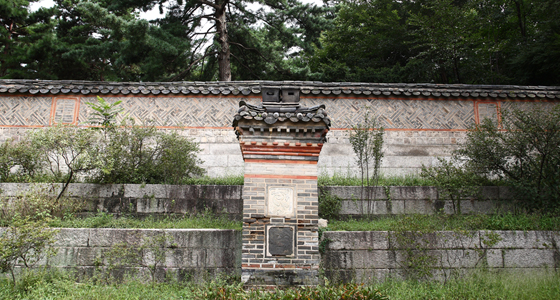
-
This is Gyeonghungak, located behind Daejojeon. Gyeonghungak was originally a two-story building, but it was destroyed during the fire at Daejojeon and then rebuilt. Inside Gyeonghungak, there is a Joilseongwando painting depicting four cranes flying over the sea, and a Samseongwanpado depicting the three immortals bragging about their ages. There is a well in the front yard of Gyeonghungak. There were several wells throughout Changdeokgung Palace that produce clean water. Among them, this well behind Daejojeon is said to have been kept clean and supervised by the queen herself. 이곳은 대조전 뒤편에 위치한 경훈각입니다. 경훈각은 원래 2층 건물이었는데, 대조전 화재 때 같이 소실되었다가 재건되었습니다. 경훈각 내부엔 바다 위를 날고 있는 네 마리의 학을 그린 조일선관도와 세 신선의 나이 자랑을 주제로 그린 삼선관파도가 걸려 있습니다. 경훈각 앞마당에는 우물이 하나 있습니다. 창덕궁 곳곳에는 맑은 물이 나는 우물이 여러 개가 있었습니다. 그 중 대조전 뒤에 있는 이 우물은 왕비가 직접 감독할 정도로 깨끗하게 관리했다고 합니다. http://www.heritage.go.kr/heritage/heritage_pop/detailImgPop.jsp?gung_number=2&file_name=img_changdeok_story_bg_11_00.jpg# http://www.heritage.go.kr/heri/gungDetail/imgDetail.do?detail_code=11&gung_number=2&img_serial_number=394&imgGubun=1&language=#
-
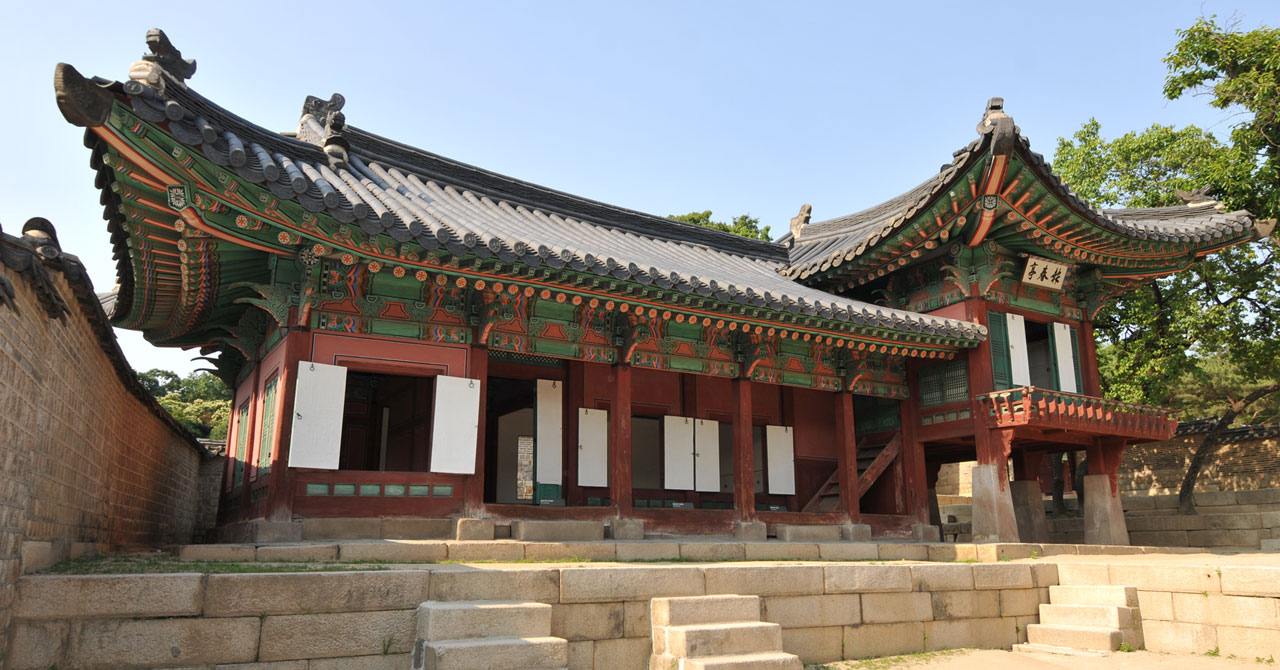
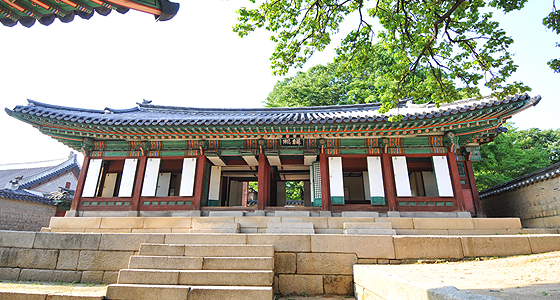
-
East of the palace, Donggung Palace is the crown prince's space. This is because the crown prince who would become the king in the future was considered like the sun before it rose. The place you are looking at is Seongjeonggak, the crown prince’s study room. "Seongjeong" is one of the ideal political principles found in Confucian scriptures, and it means realizing the way of things, discarding lies and adopting what is right. It is an appropriate name for the residence of the future king. The crown prince received classes on Confucian scriptures three times a day here, and learned six subjects including etiquette, playing musical instruments, archery, horseback riding, calligraphy, and counting. Siganwon was in charge of the crown prince's education, and his skills were evaluated regularly, and if his grades were not good, he would be scolded harshly by the king. It seems that exams could not be avoided in the past or present. This place was also used as a medical clinic during the Japanese colonial period. The square stone mortar in the courtyard is a remnant of that time. Can you see the small pavilion attached at a right angle next to Seongjeonggak? There is a signboard that says Bochunjeong in front and Huiuru on the side. It is said that during a drought that lasted for several months, when King Jeongjo visited this place after hearing that it was completed, it rained torrentially. You probably know why the name includes ‘Huiu’ or ‘happy rain’. 궁궐의 동쪽, 동궁은 세자의 공간입니다. 장차 임금이 될 세자는 떠오르기 전의 태양 같은 존재로 여겨졌기 때문이지요. 지금 보시는 곳이 세자의 공부방인 성정각입니다. 성정이란 유교경전에 나오는 이상적인 정치 원리의 하나로, 사물의 도리를 깨달아 거짓을 버리고 바른 것을 취한다는 뜻입니다. 장래에 임금이 될 세자의 거처 이름으로 제격이지요. 세자는 이곳에서 하루 세 차례 유교경전 수업을 받았고, 예법, 악기 연주, 활쏘기, 말타기, 붓글씨, 셈하기 등 여섯 가지 과목을 배웠습니다. 세자의 교육은 시강원에서 담당했는데, 학습한 실력을 정기적으로 평가하여 성적이 좋지 않으면 임금에게 호된 꾸지람을 듣기도 했다니, 시험은 예나 지금이나 피해갈 수 없었나 봅니다. 이곳은 일제강점기에 내의원으로 이용되기도 했습니다. 안마당에 있는 사각의 돌절구가 바로, 당시의 흔적이지요. 성정각 옆에 직각으로 붙어 있는 작은 누각이 보이시죠? 앞쪽엔 보춘정, 옆에는 희우루라는 현판이 함께 붙어 있습니다. 몇 달 동안 계속되는 가뭄 속에서, 정조가 이곳이 완성되었다는 소식을 듣고 방문했을 때 비가 억수같이 쏟아졌다고 합니다. 희우(喜雨), 기쁜 비라는 이름이 붙게 된 연유를 아시겠지요. http://www.heritage.go.kr/heritage/heritage_pop/detailImgPop.jsp?gung_number=2&file_name=img_changdeok_story_bg_12_00.jpg# http://www.heritage.go.kr/heri/gungDetail/imgDetail.do?detail_code=12&gung_number=2&img_serial_number=73&imgGubun=1&language=#